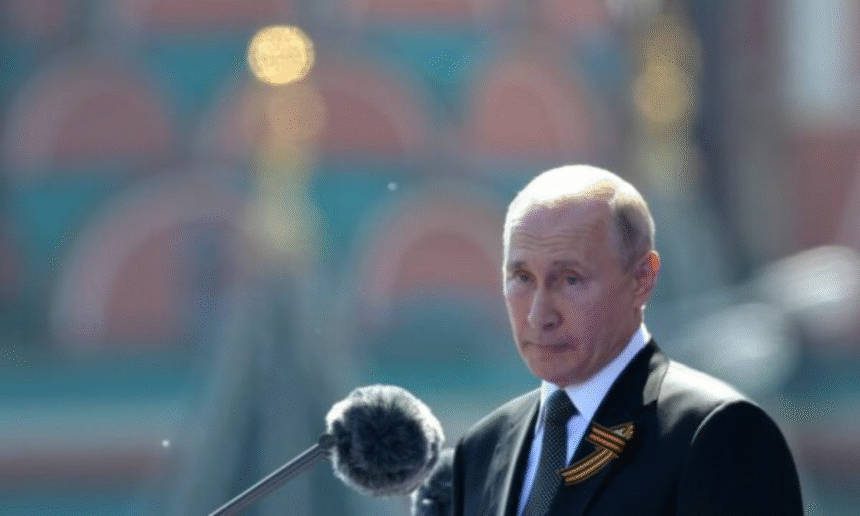New U.S. and EU sanctions deepen pressure on the Russian economy, which is hovering near recession. Experts say the measures will dent growth and revenues but are unlikely to stop Moscow from financing the war in Ukraine in the short-to-medium term.
The United States and the European Union have imposed another wave of sanctions on Russia in October 2025. While the measures — including direct sanctions on major oil companies and further curbs on energy imports and services — increase strain on Moscow, analysts warn they do not yet remove Russia’s ability to fund its military campaign in Ukraine.
Economic picture and short-term outlook
- Russia’s economy is showing signs of slowing and is flirting with recession. Annual inflation has fallen from a peak of 10.3% in March to about 8% in September, still well above the central bank’s 4% target. Growth has eased: GDP rose 1.4% year-on-year in Q1 2025 and 1.1% in Q2, down from 4.1% in 2023–24.
- Business sentiment is weak. The S&P Global Russia Composite PMI fell to 46.6 in September, its fourth consecutive month of contraction in the private sector.
- The Central Bank has cut rates aggressively. On 24 October it surprised markets with a 50-basis-point cut to the policy rate (to 16.5%), the fourth consecutive cut.
Experts from CASE and Oxford Economics expect modest growth in the near term and warn of a moderate recession risk later — possibly a contraction of 1.0–1.4% in 2026 under some scenarios.
Do sanctions work — and how much damage can they inflict?
- Scope of the latest measures: The U.S. sanctioned Rosneft and Lukoil and related entities; the EU adopted its 19th package restricting Russian LNG (from 2027) and banning imports from Rosneft and Gazprom Neft while tightening rules to limit circumvention. The bloc also restricted trade in critical materials that fuel Russia’s war effort.
- Impact on energy revenues: Energy export revenues have fallen — September hydrocarbon receipts to the budget were roughly 582.5 billion rubles (~€6.3bn), about 25% lower than September 2024. Still, energy remains a major export channel that Russia exploits, often through intermediaries and ship-to-ship transfers.
- Adaptive measures by Russia: Moscow has repeatedly found ways to circumvent sanctions (dark-fleet tankers, diversion to India and China). Domestic fiscal measures, printing rubles and robust tax collections help plug immediate holes. CASE notes that federal dependence on oil & gas revenues has dropped (from >50% in 2011–14 to ~25% by mid-2025), reducing, but not eliminating, vulnerability.
Financing the war: why it may continue despite pressure
- Budget resilience: Russia’s budget deficit is projected to be modest and manageable. Household deposits and internal savings remain sizable — reportedly several times the military budget for 2025 — enabling internal borrowing. Oxford Economics highlights Russia’s sovereign assets and liquidity buffers (sovereign fund ~5.9% of GDP, liquid portion ~1.9% of GDP in Sept). Domestic bond markets and reserves can finance deficits for a time.
- Currency and monetary levers: The government can rely on ruble financing — through central bank measures and domestic borrowing — to meet payrolls and arms spending. Printing rubles and rising tax revenues are cited as means Moscow uses to sustain military expenditure.
- Time horizon: Analysts believe sanctions will bite more deeply over time. Some, like Vladislav Inozemtsev (CASE), argue that the real weakening may only be decisive by late 2027, not immediately.
Military-targeted pressures and damaged refining capacity
- Ukraine’s strikes and physical damage: Ukrainian drone strikes have reduced Russian refining capacity by an estimated 20%, yet Russia adapts by exporting more crude and less refined product when refineries are offline. That reduces refined export values but not necessarily volumes of crude exports.
- Sustained war funding: Even with falling energy prices and targeted attacks, experts warn that Moscow can likely finance the conflict for years, provided the deficit remains manageable and external purchasers (notably China and India) keep buying significant volumes.
Key expert takeaways
- Short-to-medium term: Sanctions and attacks are eroding Russia’s economic performance and will continue to constrain growth, investment and living standards. But they are unlikely to force an immediate end to Moscow’s military campaign.
- Medium-to-long term: If export channels shrink substantially and key buyers reduce purchases, Russia’s capacity to sustain the war will deteriorate — but this is likely to play out over multiple years, not weeks.
- Policy implication: Western measures increase pressure but need to be sustained, coordinated and broadened (including enforcement against sanctions evasion) to have a decisive long-term effect.
Conclusion
The October 2025 sanctions mark a clear intensification of Western pressure. They complicate Russia’s economic outlook and slow growth, but current expert assessments suggest they do not yet remove Moscow’s ability to fund the war in Ukraine. The conflict may therefore continue for years unless sanctions, export reductions, or internal fiscal stress combine to produce a sharper collapse in available resources.







